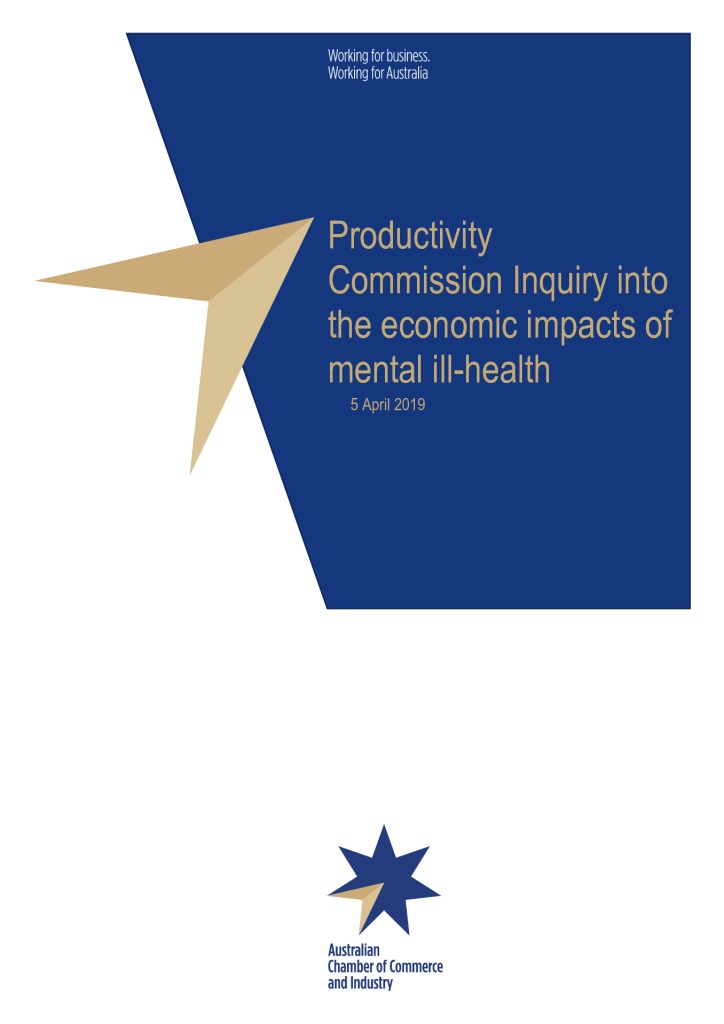Productivity Commission Inquiry into the Economic Impacts of Mental Ill-Health
The ambition of Government and for the community generally, should be that more people with disability are in work. In using the term disability here, it encompasses those with a nervous or emotional condition causing restriction and those with a mental illness or condition that requires help or supervision1. Approximately fifty-three percent (53.4) of those with disability aged 15 to 64 years participate in the labour force compared to 83.2 percent of those without disability2. The ambition should be bold and aim for a significant shift in the workforce participation rates, not just seeking to make a marginal improvement.
The Australian Chamber has previously recommended that there should be a fundamental change to the approach of disability employment services (comments made in relation to the 2017 Discussion paper on the new Disability Employment Service). The Disability Employment Service (DES) is a relatively small employment service in comparison to the larger Jobactive as well as the labour recruitment market generally. DES should be delivered by the same portfolio as the larger Jobactive employment service, being the Department of Jobs and Small Business, offering a single interface to employers. Since the shift in portfolio of DES to Social Services in 2013, the Australian Chamber has consistently called for its return to the Department of Jobs. Given that only 5 per cent of the case load of the National Disability Insurance Scheme (NDIS) is likely to be serviced by DES, this insignificant cross over does not match the efficiencies that can be obtained by operating government funded employment services from the same portfolio. If there is any hope at all of improving the number of job vacancies listed, and employer engagement, with publicly funded employment systems, it will come through a whole-of-system contact point and interaction, not through small services operating in isolation. Employer engagement needs to be dramatically improved since it is the only mechanism to achieve employment outcomes (notwithstanding the small, but important opportunities that may arise from self-employment). Identifying the need for greater employer engagement requires consideration of how this can be achieved, both in terms of DES specifically, and for publicly funded employment programs broadly.
These comments are even further reinforced by the proposal to significantly reform Jobactive by the new contract commencement in 2022. These reforms arise from an Independent Panel Review in 2018 of Employment Services, on which the Australian Chamber was represented. In part, the proposed reforms are aimed at strengthening the engagement between the publicly funded system and the job market generally. Locating DES outside of this new system increases the likelihood that it stays marginalised from the job market.

